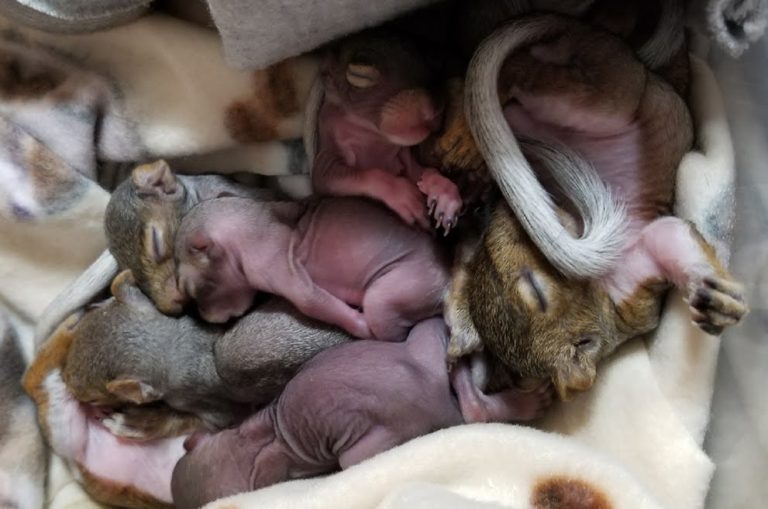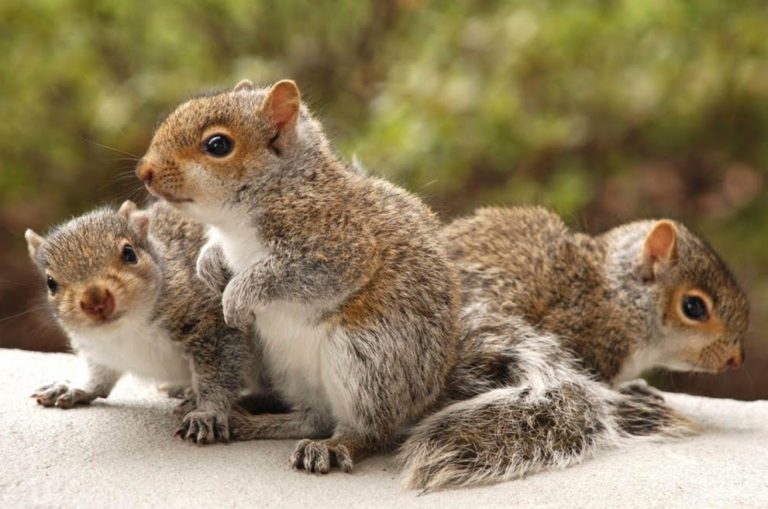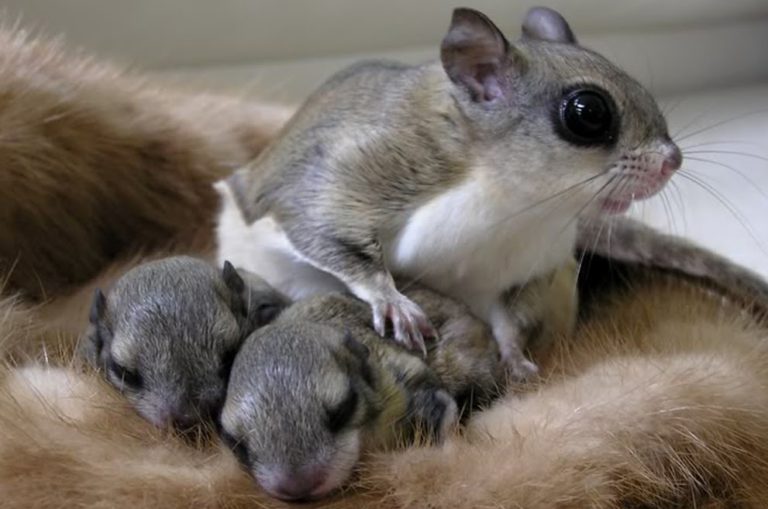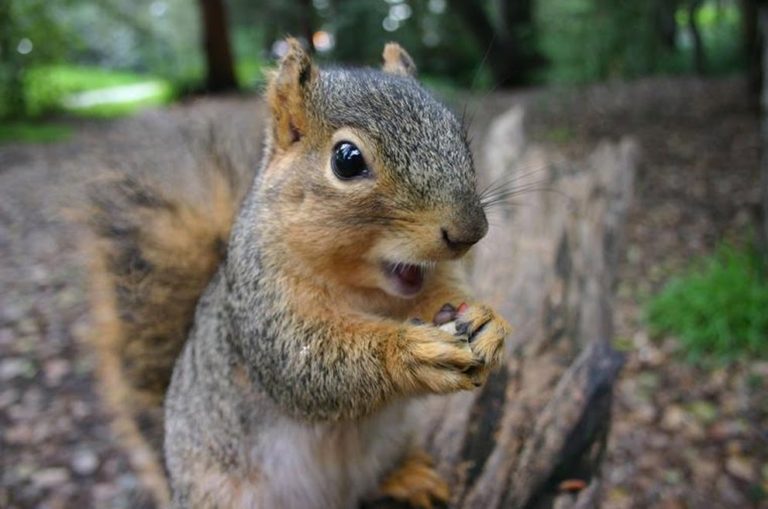
RELEVANT NATURAL HISTORY
Squirrels prosper in suburban and urban areas due to their supreme agility and adaptability. Gray squirrels are a familiar sight almost everywhere, yet not a welcome one when their quest for a suitable den leads them to take advantage of open attic vents or their voracious appetites cause them to raid backyard bird feeders.
Gray squirrels are active by day (diurnal), yet their more secretive cousin, flying squirrels, are active by night (nocturnal). Squirrels make 2 kinds of structures for raising young: leaf nests (dreys) or tree dens (cavities). They are primarily nut and seed eaters, but their diet is varied and includes insects, fungi, eggs, buds and shoots.

Their food caching habit (burying nuts in the ground for later eating) is well known yet it’s not known exactly how they locate this stashed away food. They are high-strung animals, which is why they may behave erratically when stuck in houses. They often run, frenzied, all over a house instead of merely going out an open door.
Squirrels have two litters a year, one in late winter or early spring and again in the late summer/early fall. Unfortunately, human landscaping activities coincide with exactly when squirrels are raising litters, which leads to many baby squirrels tumbling out of pruned or felled trees. If squirrels are heard scampering in the attic at those times of the year, it’s most likely a mother with babies.




